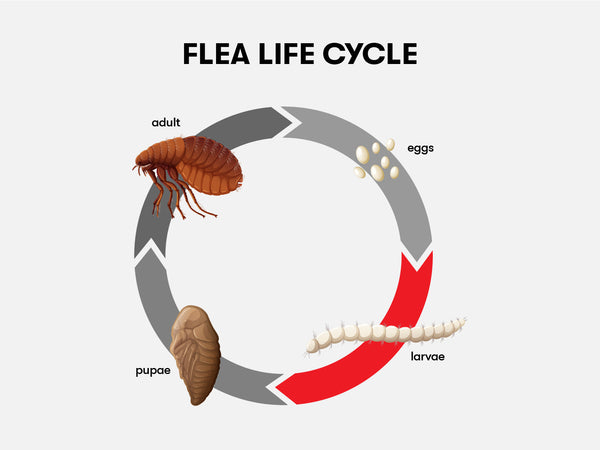How to Foster A Dog or Cat
Written by: Richard Rowlands, Pet Health Expert
The COVID-19 pandemic has led to an increase in the number of pets being fostered across the US. According to Kitty Block, president and CEO of the Humane Society of the United States, rates of fostering have increased by 90 percent in some cities. If you're considering fostering a pet, it's important to prepare yourself for the commitment. In this article, we'll take a look at how to foster a dog or cat.
Fostering is a short-term commitment to caring for a homeless pet and providing shelter, food, training, and socialization until the agreed time elapses or the pet finds a permanent home.
Adoption is a lifelong responsibility, and the adopted pet becomes a significant part of the family. Adoption is a higher commitment than fostering, but foster parents play a huge role in raising pets and getting them ready for their permanent caretakers.
What Are the Benefits of Fostering?
Here are a few of the primary benefits of fostering a pet:
- Relieves overcrowding in shelters: When a shelter is at full capacity, foster homes are needed to temporarily house pets and reduce overcrowding at the shelter.
- Acclimatizes pets to the home environment: Foster parents help socialize pets and acclimatize them to the home environment. This increases the likelihood that they will later be adopted.
- Allows sick pets to recuperate: Foster homes are a safe haven for sick and injured pets or those recovering from surgery. They create the ideal environment away from the shelter for animals to recuperate. Foster homes are also a perfect place for pregnant female animals to deliver their young.
- Saves lives: By reducing overcrowding in shelters, fostering can save lives by diminishing the effects of a potential epidemic.
What Should I Consider Before Fostering a Pet?
Here are some things to consider before filling out an application for a foster pet:
Do you have other pets?
If you have other pets at home, it's important to consider the possibility of them being exposed to infectious diseases your foster pet may bring in from the shelter facility. To minimize this risk, make sure all pets are up-to-date on their vaccinations.
Planning to foster a pet with an existing health condition that has the potential to be passed on to other animals? Ask your veterinarian for recommendations on the best ways to protect other pets in your household.
Does the animal need to be house-trained?
If the answer is yes, are you prepared to put in the time necessary to train your foster pet? Please remember that house-training can be a big commitment that requires a great deal of time and patience.
Can you afford the financial cost?
Can you afford the cost of supplies, veterinarian's bills, or outings with your new foster pet? Can you bear the cost of taking care of a puppy or kitten, or a pet with an existing medical condition?
It's vital to make sure your financial situation is stable before taking on the responsibility of fostering a pet. Please talk with a representative from the shelter facility to make sure you understand what your financial responsibilities are. Some shelter groups will contribute to the cost of caring for a foster pet.
Is the shelter run professionally?
Review the shelter's policies, terms, and agreements carefully before going through with your application. Are they responsive to calls or emails, and what is their level of involvement with foster parents? Do they try to find permanent homes for pets or is that your sole responsibility? Do they run workshops or meet-and-greets for potential adoptees? Gather sufficient information about the organization to minimize the risk of you running into problems in the future.
What Are the Responsibilities of a Foster Pet Parent?
Here are a few of the many and varied responsibilities of a successful foster pet parent:
- Providing food and safe shelter: Feed your foster pet a healthy, nutritious diet to support their overall health. Also, make sure to pet-proof your home and keep it clean to prevent any accidents.
- Providing regular exercise, training, and social activities: Exercise your foster pet regularly to keep them fit and healthy. It's also important to socialize your pet by introducing them to people and other animals.
- Showing extra care and attention if your foster pet has a health condition: Schedule regular appointments with your veterinarian and administer prescribed medications to treat and manage underlying health issues. You should also keep in touch with the shelter group to provide updates on your foster pet's health and wellbeing.
- Communicating with the shelter group: As you discover more about your foster pet's personality and needs, you should work with the shelter group to create a bio. This will increase the chances of your foster pet finding a perfect adoptee. In addition, make sure to attend organized adoption events or meet-and-greets with potential adoptees. Remember to send cute, high-quality pictures to the shelter group for them to use online and in their promotional materials.
How to Begin the Process of Fostering a Pet
The process of fostering a pet is usually quite simple. First, conduct online research to find rescue or shelter groups near you. Here are some examples of search phrases you could use:
"Animal shelters in Columbus, Ohio"
"Puppy fostering in Issaquah, Washington"
"Kitten fostering in my area"
Once you've made a list of shelter groups in your area, check out their websites (if they have one) and reach out to them via phone or email. Find out more about them, ask all the necessary questions, tell them your intentions, and ask if you can visit their physical location.
As part of the fostering process, you'll be required to fill out paperwork and provide personal information about your home, occupation, income, and family size. Some rescue groups may even request a home visit. Please note that policies and procedures will vary depending on the shelter.
Once your application is approved, the organization will help you choose a foster pet that's right for you. You'll also be briefed on basic animal care or asked to attend an orientation for new foster parents.
How to Prepare Your Home Before Fostering A Pet
Make sure your home is pet-proofed by putting any sharp objects, electrical wires, cleaning supplies, medications, or other dangerous items out of reach.
Before bringing your new foster pet home, you'll also need to stock up on essential supplies. We recommend the following items:
- A pet bed and bedding to keep your foster pet warm and comfortable.
- Healthy pet food and treats. Ask the rescue group or your veterinarian if your foster pet has any special dietary needs.
- Food and water bowls.
- A feeding bottle for puppies or kittens.
- A variety of pet toys. Balls, chew toys, and stuffed toys are popular options.
- A collar and leash. These are vital for walking and training your pet.
- An ID tag with your pet's name and your cellphone number and address.
- Pet shampoo to ensure that your pet's coat stays clean and healthy. Antifungal shampoo is best for preventing and treating common skin infections.
- A Litter box and litter (for cats).
Final Words
Fostering a pet is a great idea if you've weighed your options and decided that you can't commit to adoption. However, please think carefully before you make the commitment and seek advice from others who've previously fostered a pet. If you do decide to foster a dog or cat, congratulations! Fostering is a truly rewarding experience. It's a fantastic way to help animals in need and create memories that will last you a lifetime.


















